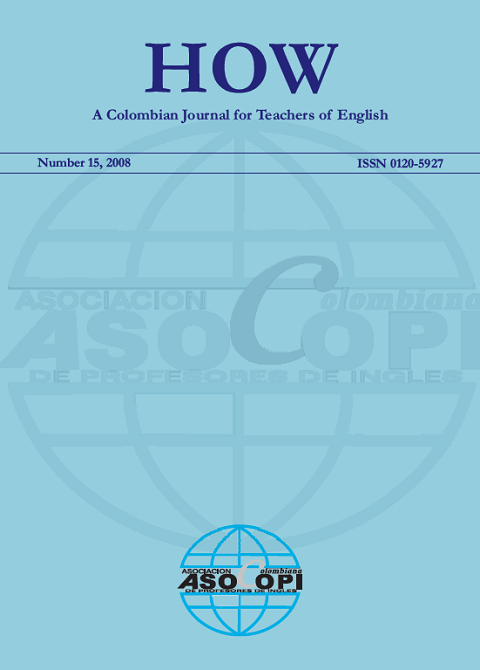Conversation Analysis (CA) in Primary School Classrooms
Main Article Content
Abstract
Although CA deals with all kinds of talk produced in natural contexts, this study focuses its interest on the talk produced in some primary school classrooms. It attempts to develop the construct that CA should move significantly ahead to more practical grounds where its detailed and isolated description causes some effect in improving foreign language teaching, for example. It might be used, for instance, to promote professional development in Colombia. It plans to involve pre-service teachers initially and in-service ones later. The kind of interaction promoted by trainee teachers shows a very restricted possibility for young learners to use the language meaningfully in the classroom. Four stages are defined and suggested as a path to follow with pre-service teachers at Universidad Pedagógica y Tecnológica de Colombia –UPTC– in the Foreign Language Programme - FLP.
Article Details

This work is licensed under a Creative Commons Attribution-NonCommercial-NoDerivatives 4.0 International License.
The authors of the manuscripts accepted for publication in HOW journal are required to sign a nonexclusive license agreement allowing ASOCOPI to reproduce the full text on the Internet or in any other available source. Authors retain copyright of their manuscripts with the following restrictions: first publication is granted to ASOCOPI; nonexclusive agreements with third parties can be established as long as the original publication in the HOW journal is properly acknowledged.
References
Bowles, H., & Seedhouse, P. (Eds.). (2007). Conversation analysis and language for specific purposes. Bern: Peter Lang.
Burns, A., & Moore, S. (2007). Conversation analysis and the accounting classroom: Exploring implications for LSP teaching. In H. Bowles & P. Seedhouse (Eds.), Conversation analysis and language for specific purposes. Bern: Peter Lang.
Cullen, R. (1998). Teacher talk and the classroom context. ELT Journal, 52 (3), 179-187.
Edwards, A. D., & Westgate, D. P. (1994). Investigating classroom talk. London: Falmer.
Hutchby, I., & Wooffitt, R. (1998). Conversation analysis: Principles, practices and applications. Cambridge: Polity.
Johnson, K. E. (1995). Understanding communication in second language classroom. Cambridge: Cambridge University Press.
Markee, N. (2005). The organization of off-task talk in second language classrooms. In K. Richards & P. Seedhouse (Eds.), Applying conversation analysis. Basingstoke: Palgrave Macmillan.
Pallotti, G. (2007). Conversation analysis: Methodology, machinery and application to specific settings. In H. Bowles & P. Seedhouse (Eds.), Conversation analysis and language for specific purposes. Bern: Peter Lang.
Psathas, G. (1995). Conversation analysis: The study of talk-in-interaction. Thousand Oaks: Sage Publications.
Seedhouse, P. (2004). The interactional architecture of the language classroom: A conversation analysis perspective. Malden, MA: Blackwell.
Seedhouse, P. (2005). Conversation analysis and language learning. Language Teaching, 38 (4), 165-187.
Seedhouse, P. (2008). Learning to talk the talk: Conversation analysis as a tool for induction of trainee teachers. In S. Garton & K. Richards (Eds.), Professional encounters in TESOL (pp. 42-57). Basingstoke: Palgrave Macmillan.
Tsui, A. (2001). Classroom interaction research. In R. Carter & D. Nunan (Eds.), TESOL Guide. Cambridge: Cambridge University Press.
Van Lier, L. (1988). What’s wrong with classroom talk? Prospect, 3 (3), 267-283.
Walsh, S. (2006). Investigating Classroom Discourse. Abingdon: Routledge.
Walsh, S., & O’Keeffe, A. (2007). Applying CA to a modes analysis of higher education spoken academic discourse. In H. Bowles & P. Seedhouse (Eds.), Conversation analysis and language for specific purposes. Bern: Peter Lang.

